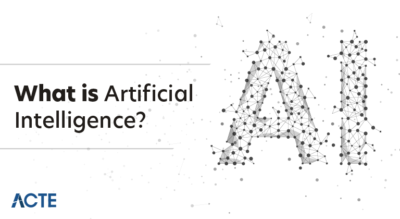
- Introduction to AI and CSPs
- Components of a CSP
- Types of CSPs in AI
- Standard Algorithms for Solving CSPs
- Applications of CSPs in AI and ML
- Challenges in Constraint Satisfaction Problems
- Future of CSPs in AI Research
- Conclusion
Introduction to AI and CSPs
In Artificial Intelligence (AI), Constraint Satisfaction Problems (CSPs) are a fundamental class of problems focused on finding values for variables that meet specific constraints. These problems have a wide range of applications in AI and machine learning, including scheduling, planning, configuration tasks, and puzzle-solving. A CSP involves a set of variables, each with a domain of possible values, and constraints that define permissible relationships between these variables. The goal is to assign values to variables in such a way that all constraints are satisfied simultaneously. CSPs are crucial for problems that require searching for optimal or feasible solutions while adhering to predefined limitations, and Data Science Training provides the tools and techniques necessary to analyze and solve such constraint satisfaction problems effectively. For instance, they are used in scheduling systems, where specific tasks must occur at certain times without conflicts, or in configuration problems, where different components must fit together in a system without violating design constraints. Understanding CSPs is essential for AI research and real-world applications, as they provide a systematic and structured approach to modeling complex problems, facilitating effective decision-making and optimization in various domains.
Are You Interested in Learning More About Data Science? Sign Up For Our Data Science Course Training Today!
Components of a CSP
The main components of a Constraint Satisfaction Problem are:
- Variables (V): A finite set of variables that must be assigned values. For example, in a scheduling problem, variables could represent time slots or tasks.
- Domains (D): Each variable has a domain, which is the set of values the variable can take. For example, if a variable represents the color of a map, its domain could be {Red, Blue, Green}.
- Constraints (C): These are rules or conditions that restrict the values assigned to the variables, and MS Excel Shortcuts can help streamline the process of managing and analyzing the data associated with these constraints.
- Solution Space: The solution space refers to all possible assignments of values to the variables within their respective domains. In a CSP, the goal is to find a valid assignment within this space that satisfies all constraints.
- Search Algorithms: To solve CSPs, various search algorithms are used to explore the solution space. These include techniques like backtracking, constraint propagation, and local search methods.
- Optimization: In some CSPs, the goal is not just to find any solution but to find the optimal solution according to a certain criterion, such as minimizing costs or maximizing efficiency.
- Finite Domains: Most CSPs deal with finite domains, where each variable has a limited set of possible values.
- Infinite Domains: In some cases, domains may be endless, such as the real numbers in optimization problems.
- Binary CSPs: Involve binary constraints, meaning constraints are only between two variables.
- Non-Binary CSPs: These involve constraints that can include more than two variables.
- Hard Constraints: These are strict constraints that must be satisfied for a solution to be valid. If a hard constraint is violated, the solution is not feasible, and knowing How to Remove Duplicates in Excel can help ensure that data used in solving such problems is clean and accurate.
- Soft Constraints: Are preferences or guidelines that should ideally be satisfied but can be relaxed if necessary. They are often used in optimization problems.
- Consistent CSPs: At least one solution exists that satisfies all the constraints.
- Inconsistent CSPs: No solution the conNNo solution solution.
- Scheduling Problems: Assigning tasks to time slots while respecting constraints like resources, deadlines, and task dependencies. Employee shift scheduling or university exam scheduling.
- Graph Coloring: Assigning colors to vertices in a graph such that adjacent vertices have different colors. This is useful in problems like register allocation in compilers. Map coloring, where adjacent regions must not share the same color.
- Puzzle Solving: Solving puzzles like Sudoku, where the goal is to fill a grid with numbers under certain constraints, as well as Sudoku puzzle solving, crosswords, and n-queens problems, can benefit from Data Science Training, which equips individuals with the analytical skills needed to develop efficient algorithms for these tasks.
- Robotics: Planning paths and tasks for robots where certain constraints (e.g., avoiding obstacles, time constraints) must be met. Autonomous vehicle route planning with traffic and road constraints.
- Resource Allocation: Distributing resources among tasks while adhering to constraints such as budget limits, available resources, and deadlines. Optimizing the use of resources in a manufacturing process.
- Scalability: As the number of variables and constraints grows, the search space becomes enormous, and solving the CSP becomes computationally expensive.
- Complexity of Constraints: Modeling real-world problems accurately often involves very complex constraints, making it difficult to find efficient solutions.
- Inconsistent CSPs: If a CSP is inconsistent (i.e., no solution exists), detecting this early and efficiently can be challenging, but utilizing tools like VBA in Excel can help automate and optimize the detection process for inconsistencies in large datasets.
- Non-Binary Constraints: Handling higher-order constraints (involving more than two variables) can be more complex and computationally intensive.
- Large Domains: When variables have large domains, the search space expands significantly, making the problem more difficult to solve.
- Dynamic Constraints: Dealing with dynamic constraints that evolve as the system operates can be challenging, requiring the algorithm to adapt continuously and efficiently without restarting the search process.

Types of CSPs in AI
Finite vs Infinite Domains:
Binary vs Non-Binary CSPs:
Hard vs Soft Constraints:
Consistent vs Inconsistent CSPs:
To Explore Data Science in Depth, Check Out Our Comprehensive Data Science Course Training To Gain Insights From Our Experts!
Standard Algorithms for Solving CSPs
Various algorithms are used to solve Constraint Satisfaction Problems (CSPs), each employing different strategies to find solutions. One common method is Backtracking, a depth-first search algorithm where variables are assigned values one at a time. If a constraint is violated, the algorithm backtracks to the previous assignment and tries a different value. While effective, backtracking can be slow for large CSPs, much like how Bard AI by Google The Real-Time Conversational Chatbot utilizes advanced techniques to efficiently handle real-time conversational data. Forward Checking enhances backtracking by checking the domains of unassigned variables before making an assignment, which helps prune the search space and reduces the chances of failure. Constraint Propagation is another technique that reduces the domains of variables based on the constraints, often used in conjunction with backtracking to speed up the search process.

Heuristic Search involves using heuristics to guide the search, with common heuristics including Minimum Remaining Values (MRV), Degree Heuristic, and Least Constraining Value, which help prioritize variables and assignments for more efficient solving. Lastly, Local Search Algorithms, like Min-Conflicts or Hill Climbing, iteratively improve a solution by making local changes, and while they work well for large CSPs, they may get stuck in local optima.
Applications of CSPs in AI and ML
CSPs are widely used in AI and ML across many different domains:
Are You Considering Pursuing a Master’s Degree in Data Science? Enroll in the Data Science Masters Course Today!
Challenges in Constraint Satisfaction Problems
While CSPs provide a structured way to solve complex problems, there are several challenges associated with them:
Future of CSPs in AI Research
The future of Constraint Satisfaction Problems (CSPs) in AI research is centered on enhancing the efficiency and scalability of algorithms to tackle increasingly large and complex problems. One key trend is the integration of CSP techniques with machine learning, where data-driven methods are used to learn effective heuristics or guide constraint relaxation, allowing solvers to navigate complex problem spaces more efficiently. This fusion enables adaptive and intelligent solving strategies that improve performance over time. Another significant direction is Distributed CSPs, where multiple agents or machines work together in a coordinated manner to solve parts of a problem concurrently, and techniques like the LightGBM Algorithm can be used to optimize decision-making and data processing in distributed systems. This approach is particularly valuable for large-scale, decentralized applications like sensor networks or multi-robot systems. Additionally, quantum computing is emerging as a promising area, with researchers exploring quantum algorithms to solve CSPs more quickly than classical methods. Quantum approaches may offer exponential speed-ups for specific problem types, potentially transforming how CSPs are solved in the future. Together, these trends aim to push the boundaries of what is computationally possible, making CSPs more powerful and applicable across a wider range of real-world AI challenges.
Preparing for Data Science Job? Have a Look at Our Blog on Data Science Interview Questions & Answer To Ace Your Interview!
Conclusion
Constraint Satisfaction Problems (CSPs) are a fundamental concept in AI, offering a structured approach to solving a wide range of real-world problems. From scheduling and resource allocation to puzzle-solving and machine learning, CSPs provide a framework for efficiently managing constraints while seeking optimal solutions. In a CSP, the goal is to find values for variables that satisfy a set of constraints, which can represent conditions or limitations in a given problem. These problems are pervasive in many domains, such as creating schedules for employees, allocating resources, or solving optimization tasks, and Data Science Training provides the necessary skills to analyze and develop solutions for these complex challenges. However, challenges remain, especially when scaling CSP solutions to handle large, complex problems, as the search space can grow exponentially. Despite these difficulties, ongoing research in AI is improving algorithms, making CSPs an increasingly effective tool for tackling complex decision-making and optimization tasks. For anyone involved in AI and machine learning, understanding CSPs is crucial, as they provide valuable insights into how constraints can guide decision-making, improve efficiency, and optimize outcomes in dynamic and challenging environments.




